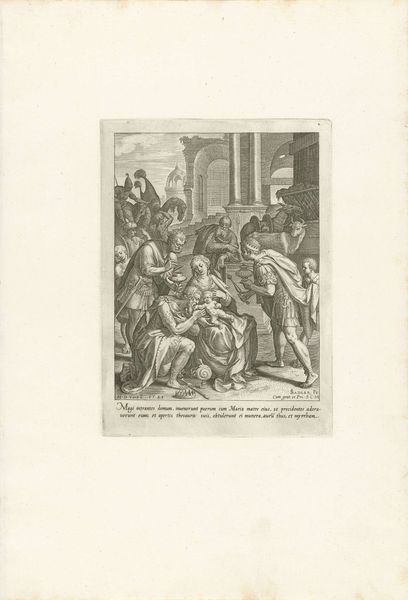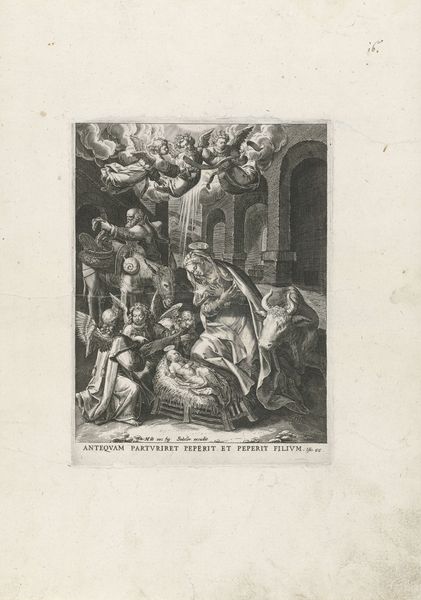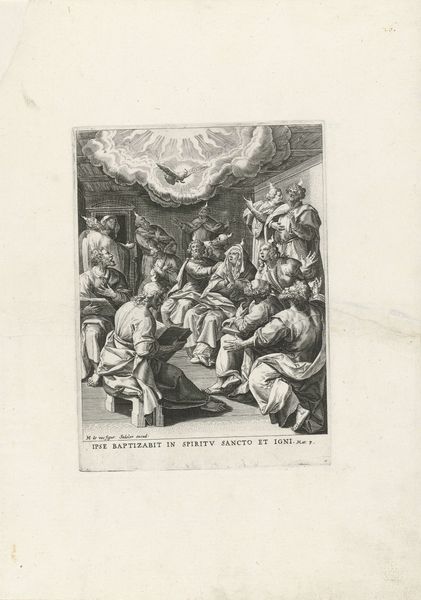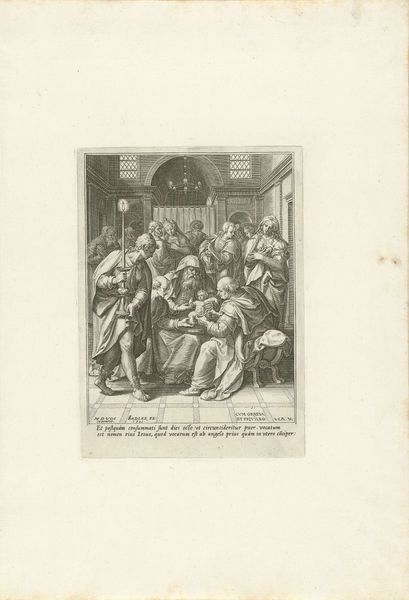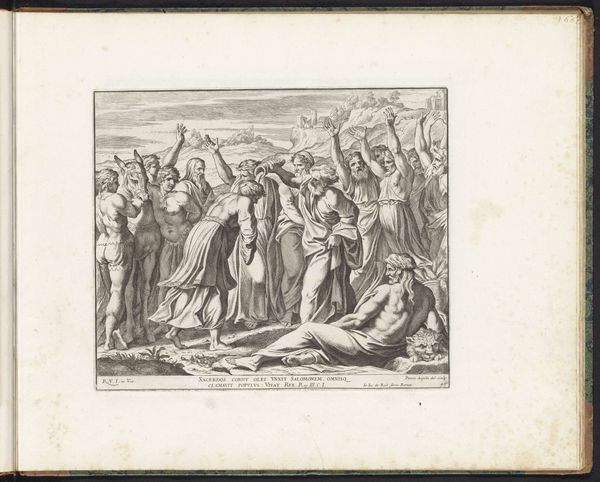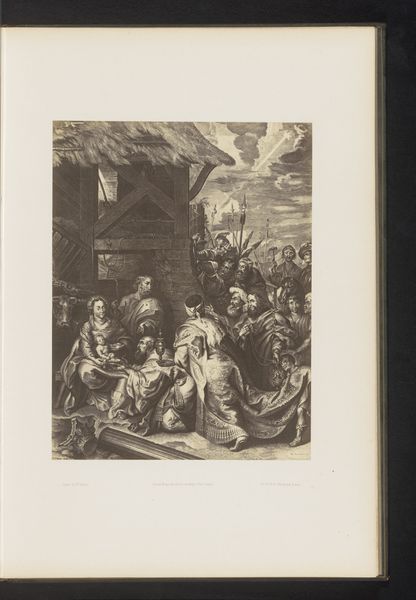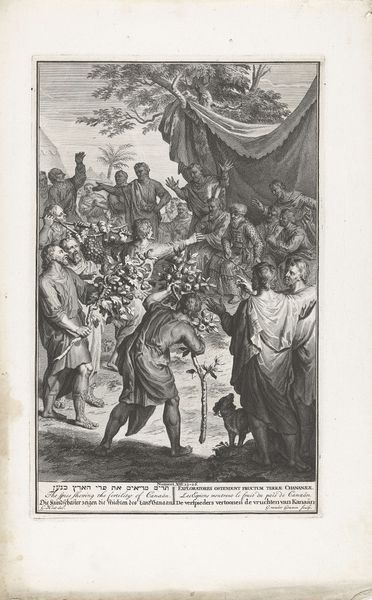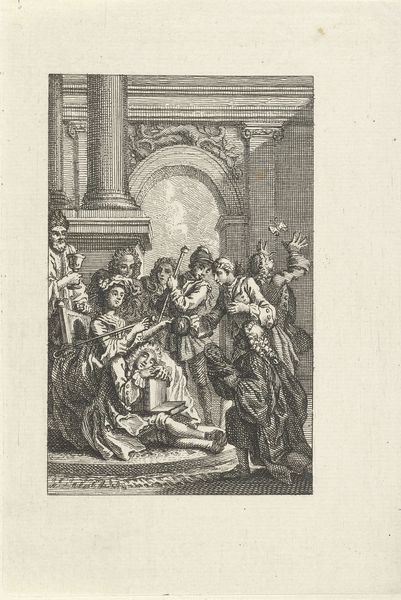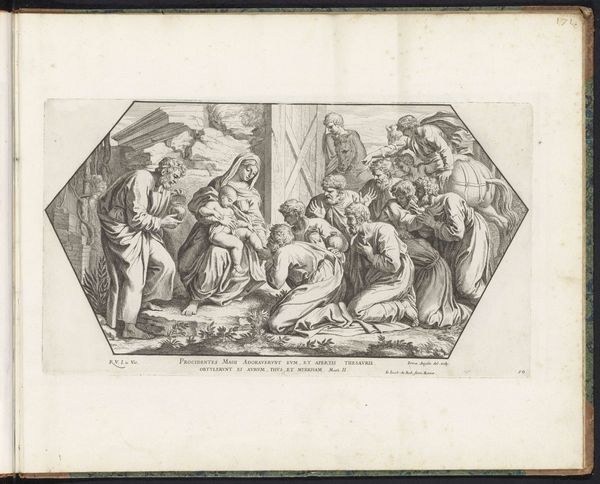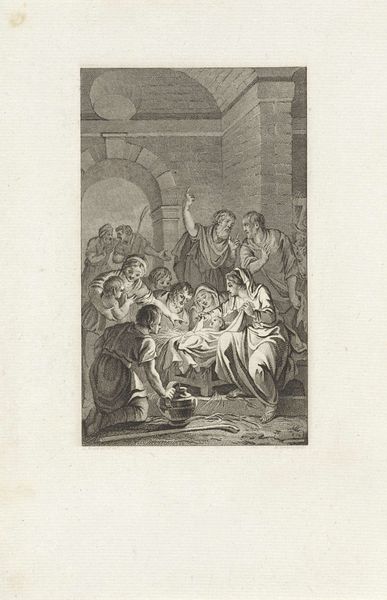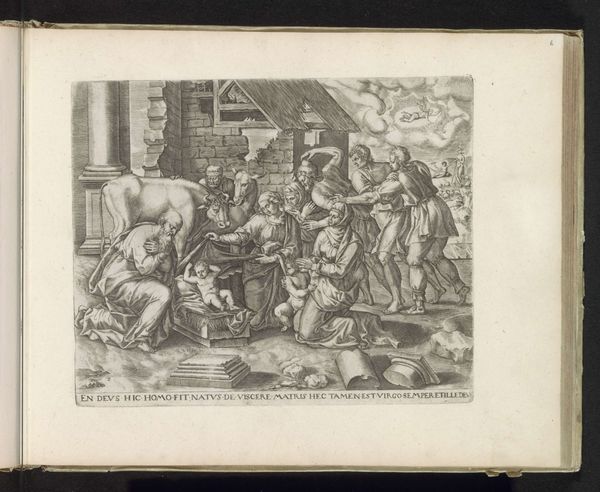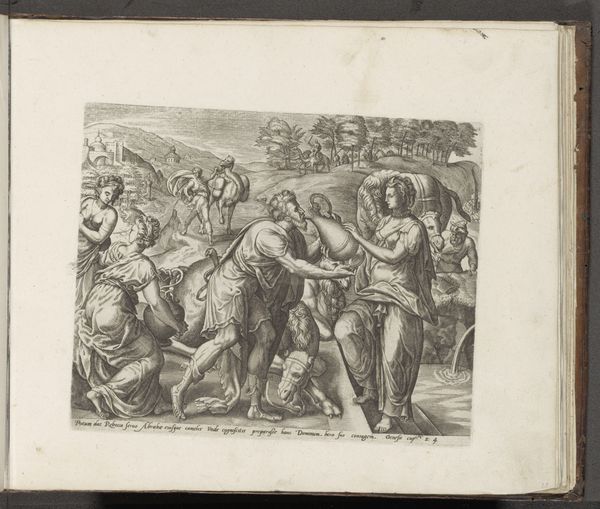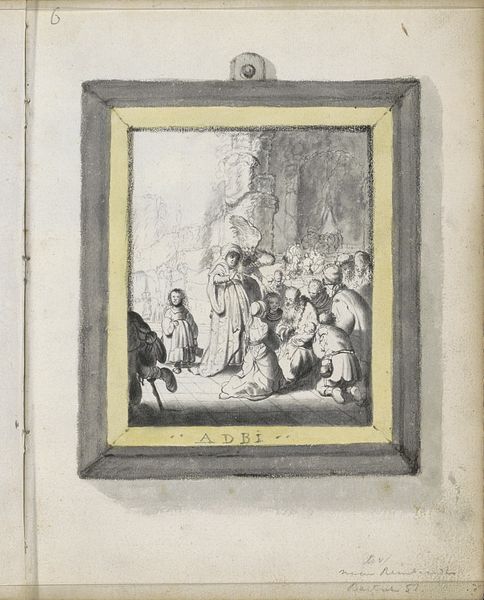
print, engraving
medieval
mannerism
figuration
line
history-painting
engraving
Dimensions: height 200 mm, width 147 mm
Copyright: Rijks Museum: Open Domain
Curator: Okay, let's talk about this striking print, "Kruisdraging," or "The Bearing of the Cross," made by Johann Sadeler I, sometime between 1587 and 1589. Editor: Whew. It’s… dense. My first thought? Claustrophobia. So many figures crammed into that space, all sharp angles and everyone seems so grim. I feel Jesus’s exhaustion. Curator: Absolutely, that intensity comes from Sadeler’s masterful engraving technique and how he manipulates line to create shadows. The composition draws your eye straight to Christ struggling beneath the weight, surrounded by figures who appear almost menacing. The towering architecture in the background heightens that sense of foreboding, no? Editor: Exactly! Like this cityscape is closing in. And these hardened faces really stand out. All of these figures kind of leaning and tilting. Does that give it that, what is it…Mannerist style that I keep reading about? Curator: It does. That stylistic emphasis is all about artifice, exaggeration, and a certain dramatic tension— a rejection of Renaissance balance in favor of emotional impact and intellectual complexity. Sadeler plays with spatial distortion. Editor: You can feel that emotional tug, definitely the cruelty of it all and how his suffering is made almost performative for this menacing crowd, right down to the very clean engraving work used. And yet I almost find the faces blank as well; are we supposed to bring ourselves into them? Curator: I think so. Sadeler's work asks us to not only witness but contemplate our role. Also, prints such as these played a crucial role in disseminating religious imagery. A powerful message delivered on a relatively small scale, to be circulated and reflected upon in private and collective devotion. Editor: Yes, there’s this strange sense of being implicated, trapped within the drama. Thinking about that now, knowing how this work was dispersed, shared and contemplated is very affecting. Well, this was way more than a simple "first impression" indeed, right? Curator: Indeed. And this contemplation of faith and responsibility really echoes through time; even if at first the visual overload feels like a weight. Thank you for your valuable input, and joining me here today.
Comments
No comments
Be the first to comment and join the conversation on the ultimate creative platform.
